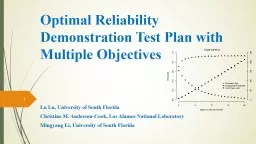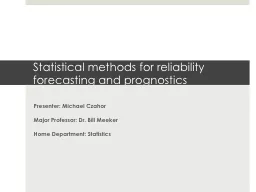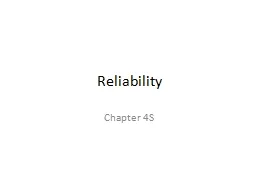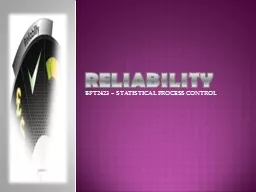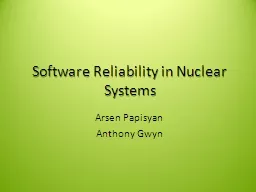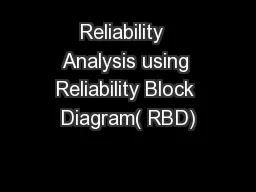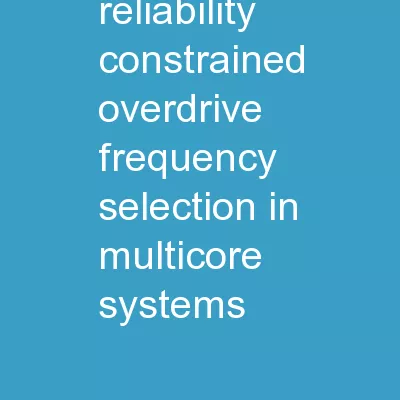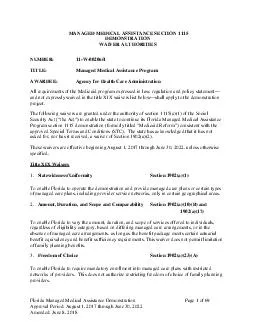PPT-Optimal Reliability Demonstration Test Plan with Multiple Objectives
Author : heartfang | Published Date : 2020-10-01
Lu Lu University of South Florida Christine M AndersonCook Los Alamos National Laboratory Mingyang Li University of South Florida 1 Outline Binomial Demonstration
Presentation Embed Code
Download Presentation
Download Presentation The PPT/PDF document "Optimal Reliability Demonstration Test P..." is the property of its rightful owner. Permission is granted to download and print the materials on this website for personal, non-commercial use only, and to display it on your personal computer provided you do not modify the materials and that you retain all copyright notices contained in the materials. By downloading content from our website, you accept the terms of this agreement.
Optimal Reliability Demonstration Test Plan with Multiple Objectives: Transcript
Download Rules Of Document
"Optimal Reliability Demonstration Test Plan with Multiple Objectives"The content belongs to its owner. You may download and print it for personal use, without modification, and keep all copyright notices. By downloading, you agree to these terms.
Related Documents

